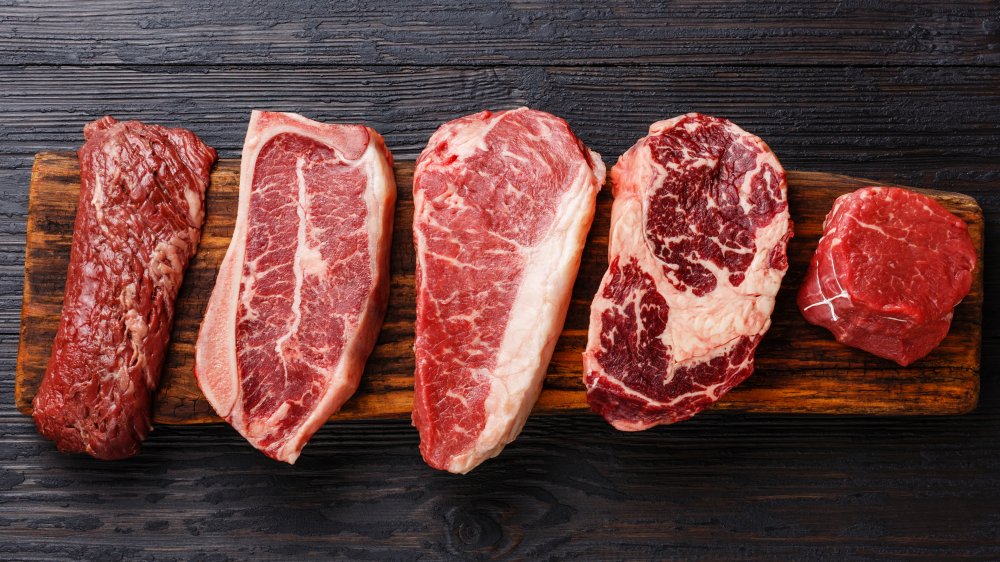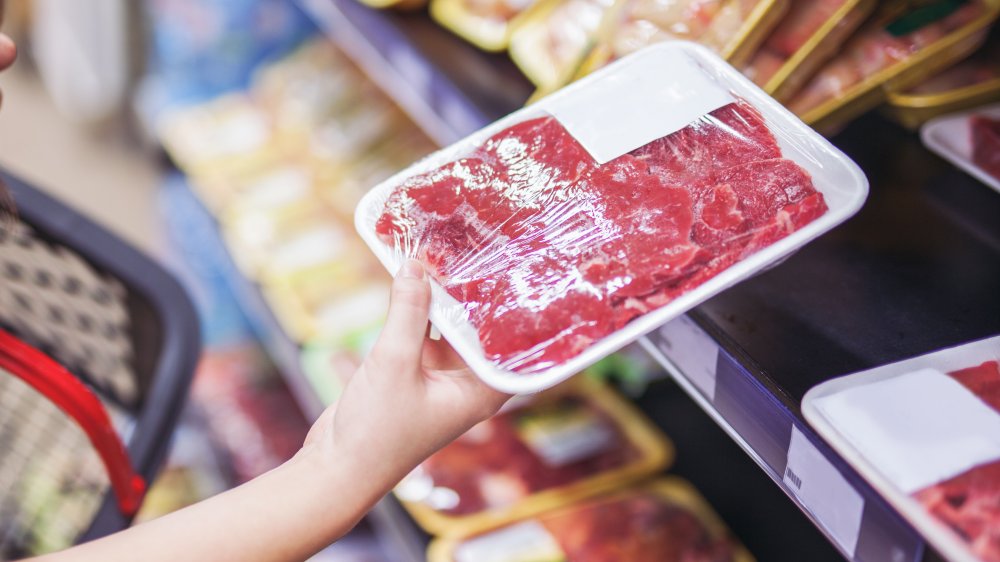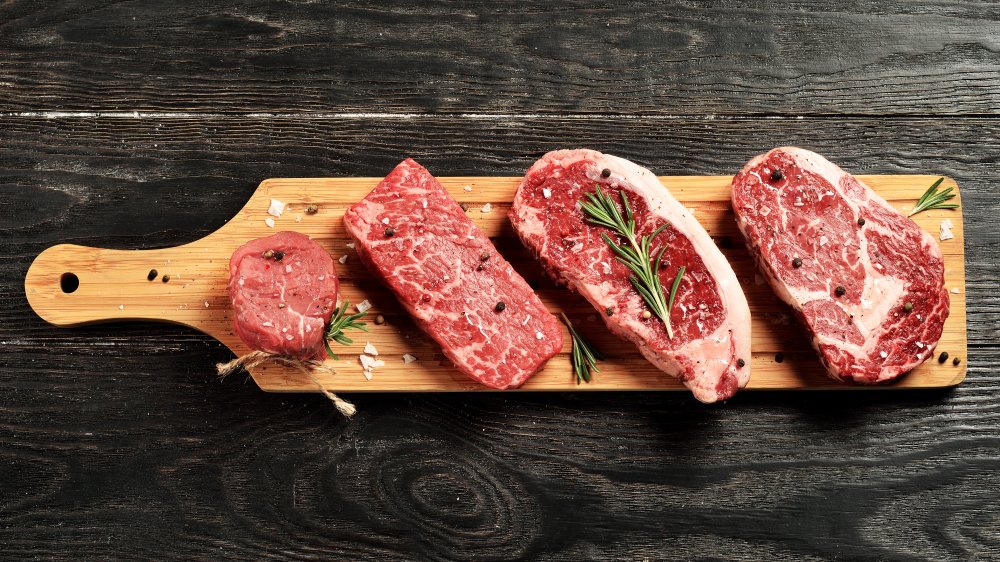Here's The Real Difference Between Wet Aging And Dry Aging
If you're unfamiliar with meat production, you may think that once you slaughter, clean, and butcher the animal it's ready to be consumed — but this is not exactly true. According to The Kitchn, all meat needs to be aged before it is good to eat. This in-between time (known in the biz as aging) allows the enzymes in the meat to begin breaking down the muscle tissue, making it more tender and easier to digest.
Different meats need different amounts of time to accomplish this process. Meats like chicken have the fastest turnaround time, only needing a few days of aging. If you're planning on butchering a pig, you will need to let it age for a week or more before it is ready. Beef generally needs to age much longer than other meats, and there are two commonly used methods to go about the process — wet aging and dry aging.
Ultimately, The Atlantic says that both methods are perfectly good ways to age beef, it just comes down to preference. Some cuts, like skirt steak, can not survive the dry aging process because they do not have a protective layer of fat and whither away in the exposed environment. Cuts like short loin, which is aged with both fat and bones intact, take to dry aging very well. The Kitchn suggests you try out steaks aged in both ways to see which you prefer; describing the flavor of dry aged beef as slightly nutty and wet aged beef as less complex.
Please do not try wet aging at home
To wet age beef, The Spruce explains that a butcher or meat processing plant will vacuum-seal steak into a plastic bag, which is then stored in the refrigerator under precise conditions for at least 14 days. The Atlantic states that this method causes the meat to take on a slightly sour flavor, due to it being sealed in the bag to age with its own blood. While you might think this sounds incredibly unappetizing, the outlet says that most meat sold in U.S. grocery stores today is wet aged, so the flavor clearly isn't that big of a deal-breaker for the American consumer. According to The Spruce, this ubiquity is simply because wet aging is cheaper than dry aging.
While this process may sound easy, The Spruce begs you not to try one of the many "steak aging hacks" currently being shared across the internet. They assert that when being wet aged, meat must be kept at a very specific temperature in a humidity-controlled environment — aka not your average refrigerator. Attempting to age meat at home is more likely to end with you in the hospital than with a super tender, restaurant-quality steak.
Dry aging is more complicated and requires an experienced butcher
Dry aging is done by hanging meat to age inside a cold, well-ventilated, climate controlled room. The Spruce says that the temperature for dry aging meats always needs to stay between 36 degrees F and freezing. If the meat gets too warm it will spoil and if it gets too cold it will freeze and not age. An experienced butcher needs to be monitoring the meat frequently to ensure everything goes according to plan. Dry aging takes a minimum of 11 days and can easily continue for up to 30, depending on what qualities the butcher is looking for.
The Atlantic writer likes this method because it creates a more intense beef flavor by allowing meat to breathe and lose water; this method also allows other microbes to access the meat. While perfectly safe to eat, some people are grossed out by the fuzzy texture on the exterior and the smell of dry aged beef. Beef farmers Lone Mountain Wagyu also states that dry aging creates less sellable steak out of each cut of meat than wet aging, as butchers must "face," or cut off the exterior, for the meat to pass USDA standards, removing the fuzzy layer.


